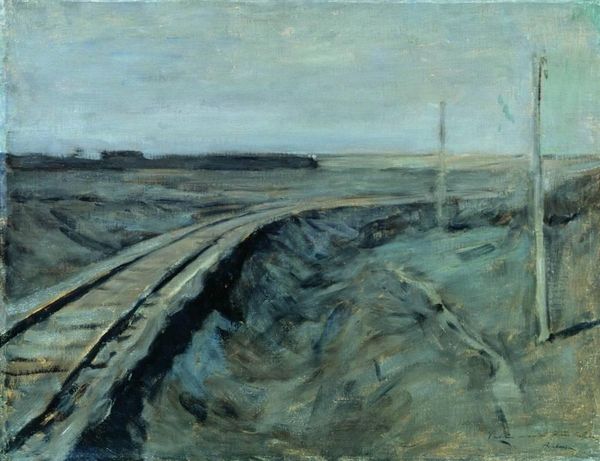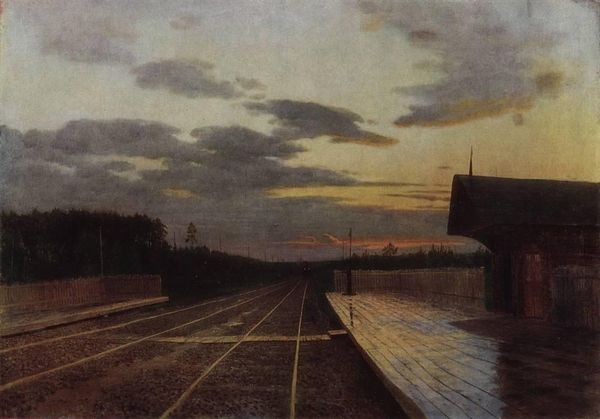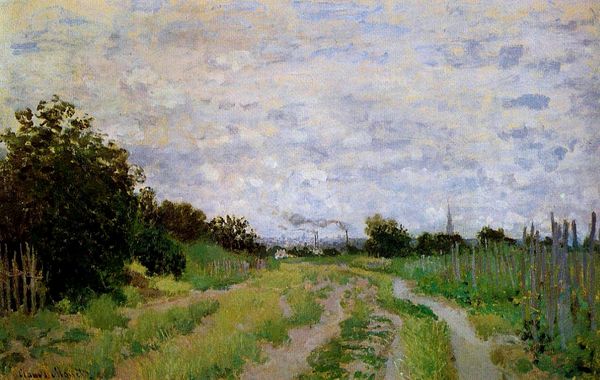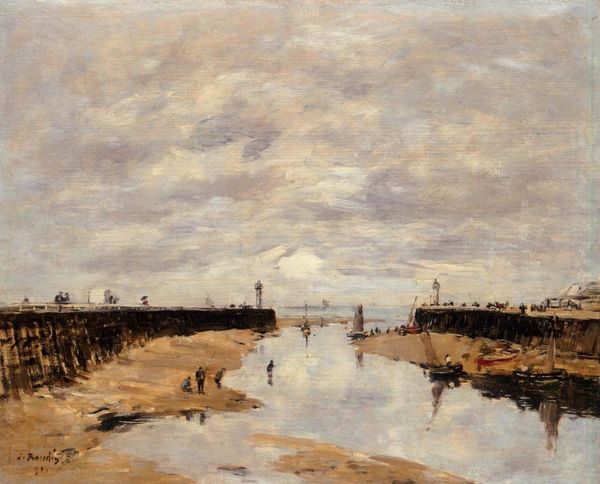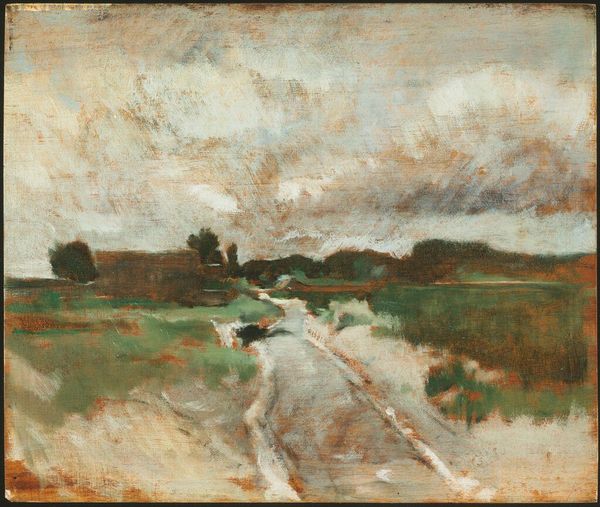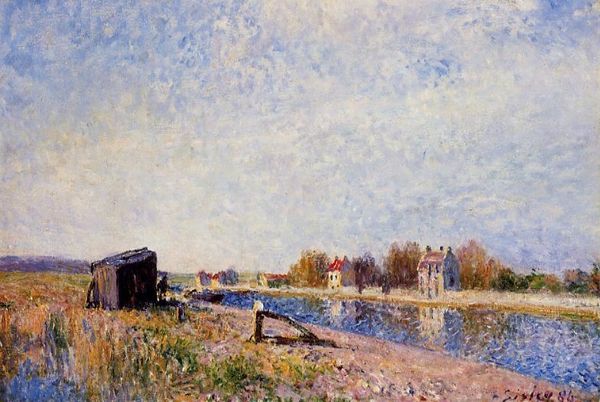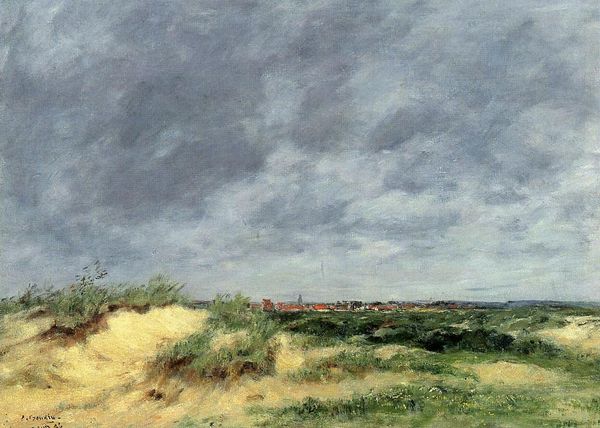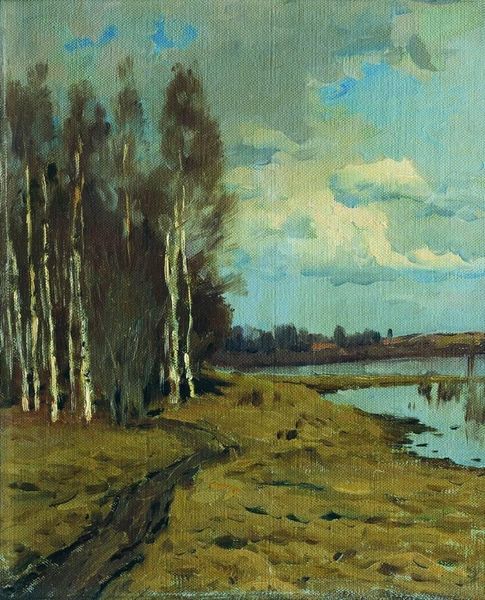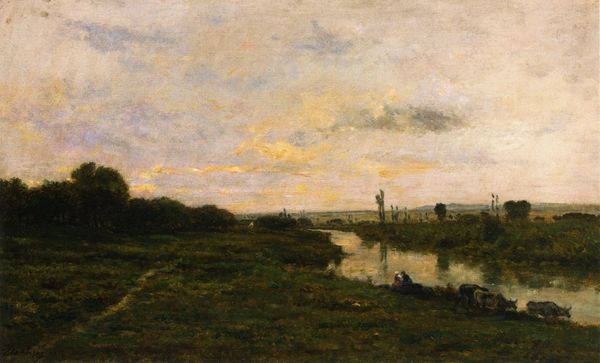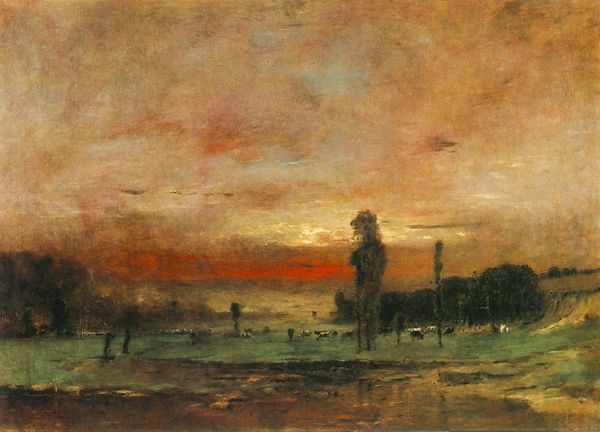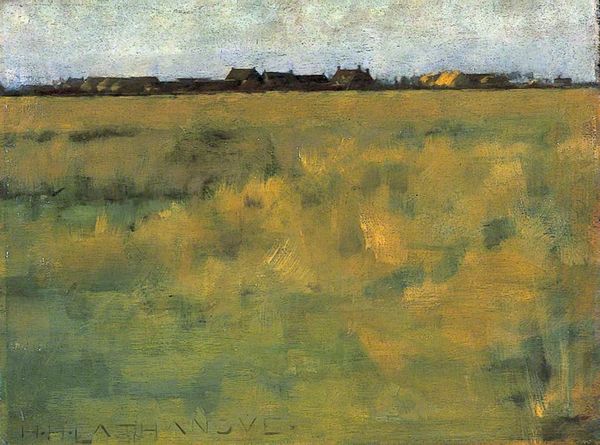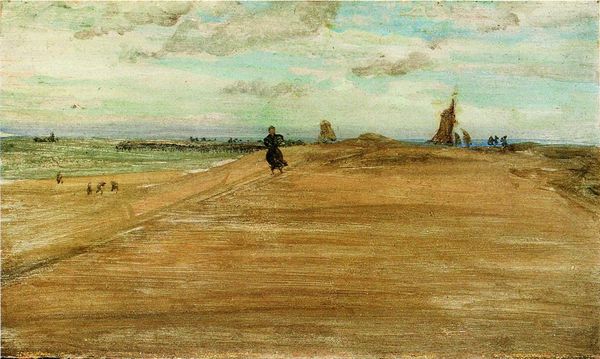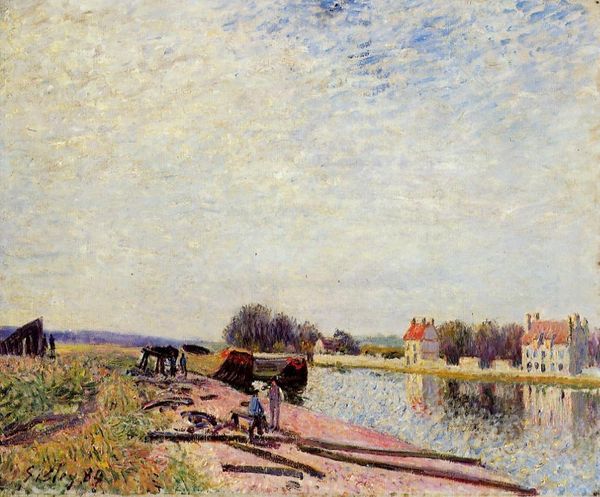
oil-paint
#
tree
#
sky
#
rural-area
#
impressionism
#
oil-paint
#
landscape
#
impressionist landscape
#
oil painting
#
road
#
natural-landscape
#
naturalism
Copyright: Public domain
Editor: Here we have Isaac Levitan's "The Halt," created in 1885 using oil paints. I'm struck by how grounded and almost industrial it feels, despite being a landscape. It's not romantic in the way I'd expect. What’s your take on this work? Curator: The apparent simplicity is deceptive. Think about the material conditions surrounding this artwork. Russia in 1885 was undergoing rapid industrialization. This piece isn't just about 'nature'; it's about the imposition of infrastructure upon the landscape. How does the inclusion of the train tracks change our perception of the rural area? Editor: I see what you mean. The tracks and signal disrupt the natural scene. They represent progress, but maybe also at the cost of the untouched landscape. Curator: Exactly. And consider the oil paint itself. Its mass production allowed artists like Levitan to capture these transient moments quickly, facilitating the Impressionistic style. The materials and their accessibility directly influenced the style and subject matter. Does knowing this change your interpretation? Editor: It does. It's not just a scene; it's a statement about the changing Russian landscape and how accessible materials influenced the way artist make art. The artist makes a halt for both landscape and progress. Curator: Precisely! Looking beyond the aesthetic reveals the artist reflecting on those very conditions, making the painting a product of its time and commentary. Editor: This has been incredibly helpful; I’ll never look at landscapes the same way again. It is interesting to consider the labor, resources, and social implications intertwined with every piece of art. Curator: It is a fruitful line of thinking! Seeing art this way illuminates its connection to our shared history.
Comments
No comments
Be the first to comment and join the conversation on the ultimate creative platform.
